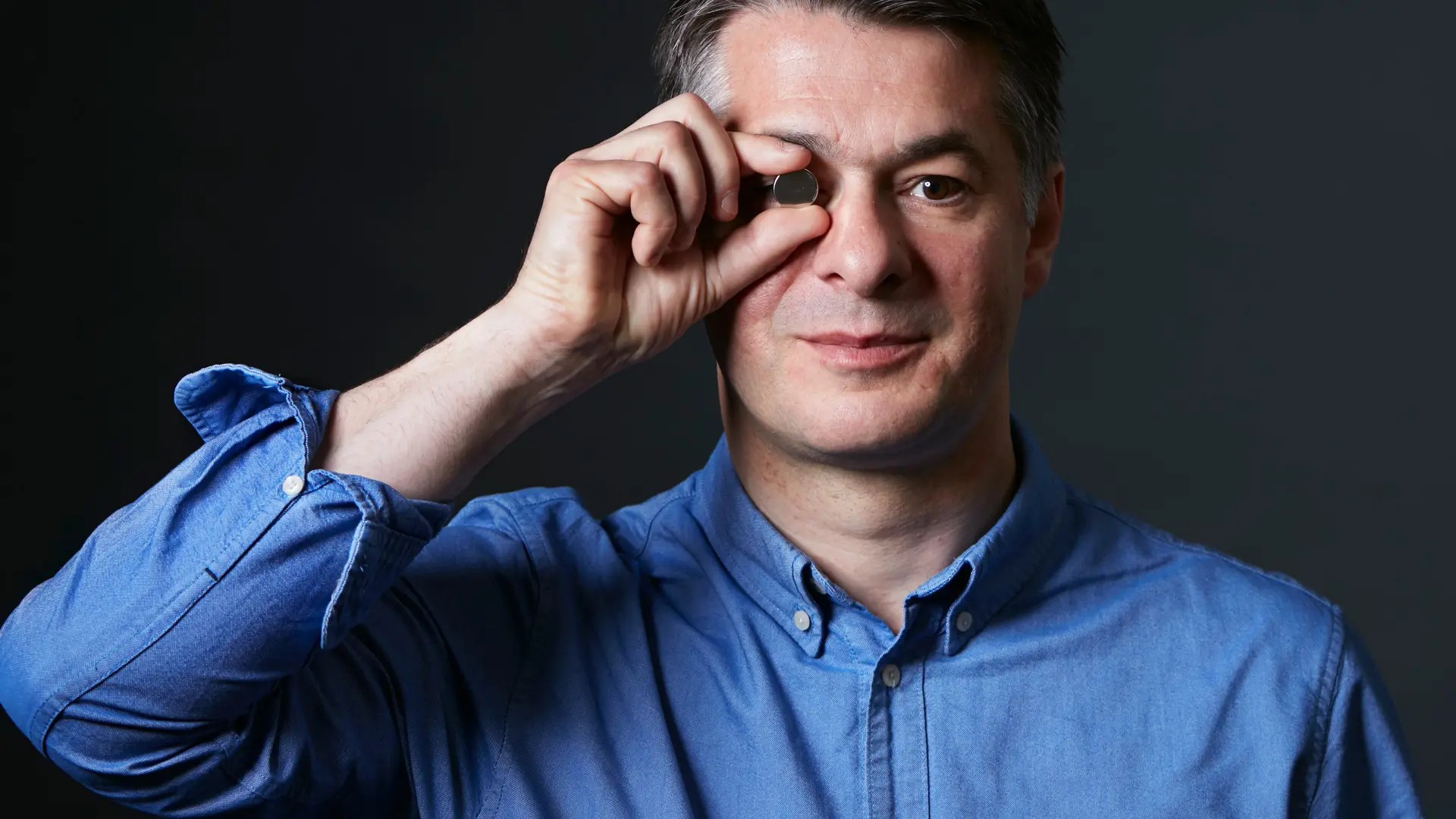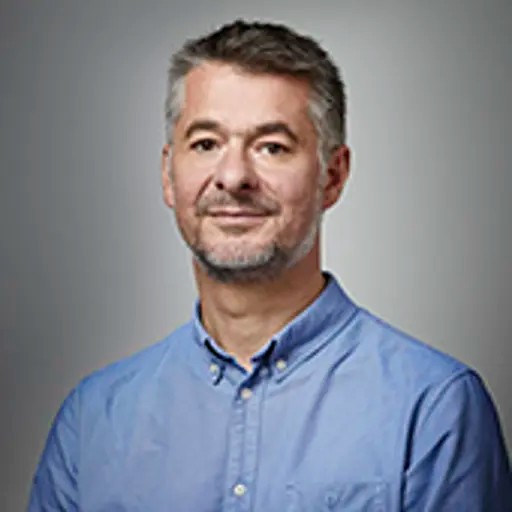
There was no money, political support or marketing budget. But that didn’t stop Aleksandar Matic from spearheading efforts to get Europe’s new facility for neutron scattering placed in Sweden. And now the giant European Spallation Source facility, ESS, is being built outside of Lund.
“I love challenges, things that really shouldn’t be possible – like building a EUR 2 billion research centre with no money, in a meadow in southern Sweden,” says Aleksandar Matic, physics professor at Chalmers University of Technology.
It’s been more than 17 years since he and a few Swedish and Nordic colleagues came up with the idea. They went on to travel around Europe to whip up enthusiasm for building ESS in Sweden.
They envisioned a facility like a giant microscope able to look inside materials with neutrons. Now their vision is becoming a reality. ESS is Sweden’s largest research investment ever, and is expected to open its doors in 2023. Along with the nearby Max IV laboratory, ESS is expected to attract thousands of researchers from all over the world to Lund.
...at least as cool as Paradise Hotel
Materials science was what kindled Matic’s passion in physics.
“When I realised that the properties of a material were linked to what it looked like at the atomic and molecular levels, it was really mind-blowing. Now I want to inspire the next
generation to discover how awesome physics, chemistry and maths are – at least as cool as Paradise Hotel.”
He encounters many young people in his work, when he talks to schoolchildren and upper-secondary school students as well as when he works at the Department of Physics at Chalmers. It’s an international workplace, and many of his closest colleagues are doctoral students and postdocs between 25 and 35 years old.
“It’s a great pleasure to work with young people and to meet colleagues around the world sharing their knowledge and ideas.”
For himself, however, the choice to study engineering physics after completing upper-secondary school was mostly rational. He liked that it sounded difficult, but he also thought it would lead to many job opportunities. He was also attracted by the idea of being able to work in a wide array of areas as a physicist – and that technical degrees are well respected.
New materials from the forest and better batteries
He developed an interest in research infrastructure during his doctoral work when he conducted experiments at facilities throughout Europe. To develop new materials that can be used for healthcare technology, transportation, information technology, environmental technology or energy, we need advanced research facilities. And that’s why ESS is a little bit closer to home. But Matic isn’t one to just sit and wait. He spends around 150 days a year travelling and participates in Sweden’s national research initiative Treesearch, which aims to develop new materials with raw materials from the forest. Currently, his research focuses heavily on batteries – from new materials to finished battery concepts being tested and optimised in a “Bat Lab” at Chalmers.
“To develop the next generation of batteries, we need to work with real problems and continuously improve the properties of the materials. Modern batteries are too big, heavy and expensive, and their energy content is too low. My dream is to develop an environmentally sustainable battery that will allow a car to drive 800 km on a single charge. And after that, it should fully charge in two hours. If we had that, we wouldn’t need fossil fuels at all. We’re not anywhere near there today.”
It’s quite clear that he won’t run out of challenges any time soon, but difficult tasks don’t faze him.
“Succeeding at something that seems difficult may have a little bit to do with skill, but 90 percent of it is about stubbornness and hard work. Just look at me! And when something is this much fun, it’s easy to work hard at it. I’m good at being stubborn when it comes to physics.”
More about Aleksandar Matic
Born: 1968 in Västerås
Lives: In Mölndal
Family: Wife and two children
Job: Professor of physics at Chalmers, Head of the Division of Condensed Matter Physics, and head of Chalmers Materials Science Area of Advance
Career in brief: After completing upper-secondary school in Västerås, he began studying engineering physics at Uppsala University. He began his doctoral work at the Royal Institute of Technology in Stockholm, but finished it at Chalmers University of Technology, where he defended his thesis in 1999. After that, he worked in the Nordic Energy Research programme, and then he was one of the people behind the initiative to build the European Spallation Source (ESS) research facility in Sweden. Then, he was hired as an assistant professor at Chalmers via the Swedish Research Council, and that was that. In 2010 he became professor.
Leisure: I’m the chairman of the Gothenburg fencing club, of which one of my daughters is a member. I’ve accompanied them to competitions in many countries and even learned a bit of fencing myself. I also enjoy swimming, skiing and hiking. If I have the time, I love to cook! One of my favourite dishes is osso buco. (An Italian stew made of veal shanks)
Favourite places for inspiration: The lunch room at the Gothenburg Physics Centre. A little village in south-western Sardinia for two weeks every summer and the Swedish mountains both summer and winter. Sometimes it’s nice not to have to think about anything except where to put your foot, where to pitch your tent and what you’re going to eat.
Most proud of: That we managed to get ESS built. Another fun thing was when I was on the awards committee for the Gothenburg Lise Meitner Award, which went to the German professor Stefan W Hell in 2010/2011. When he came to Gothenburg, I told him he was well on his way to Stockholm. He remembered that the next time we met – after he received the Nobel Prize in chemistry in 2014.
Motivation: That it’s so much fun and so challenging.
First memory of physics: I suppose it was when I began studying material physics and suddenly realised that the properties of a material were linked to what it looked like at the atomic and molecular levels. That was really mind blowing.
Best thing about being a scientist: When you get good results and someone comes in from the lab with a paper in hand, all enthusiastic. It’s also a huge honour to work with so many incredible people from all over the world.
Challenges of the job: That it’s never finished. As soon as you have one result, there’s another step to take, something to improve. It can be hard to relax.
Dream for the future: To find material solutions for the batteries of the future that work on a large scale, are environmentally sustainable and cheap at the same time.
Contact
- Full Professor, Materials Physics, Physics
